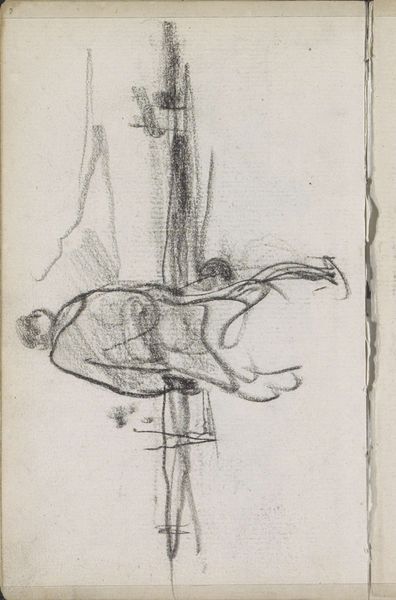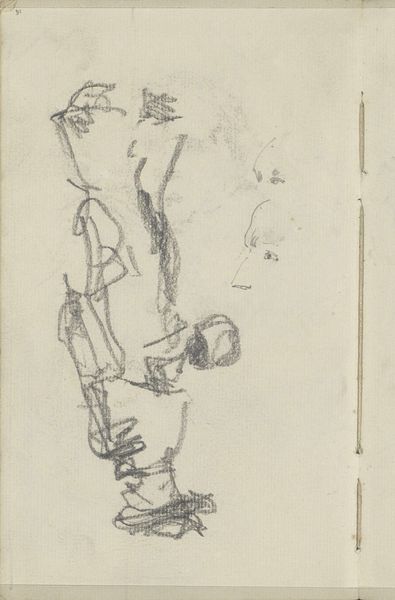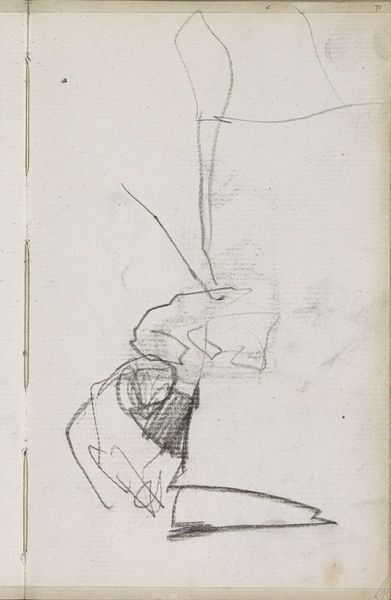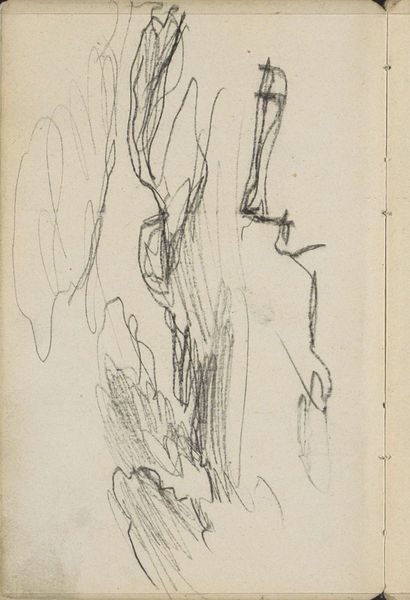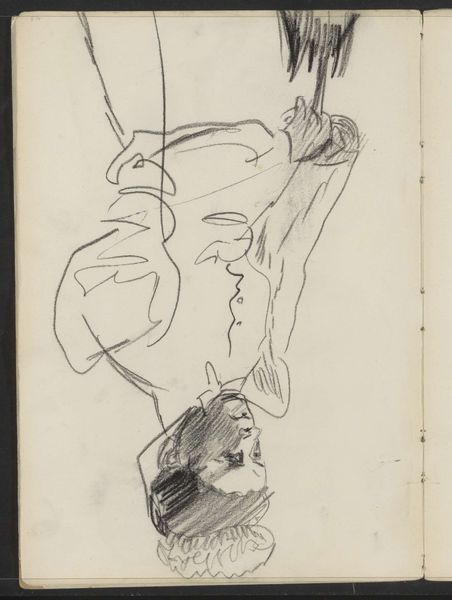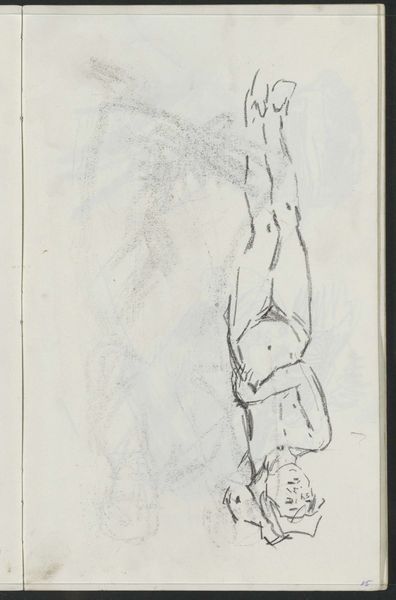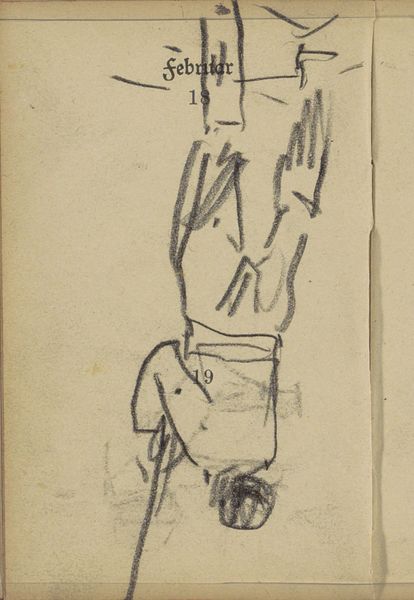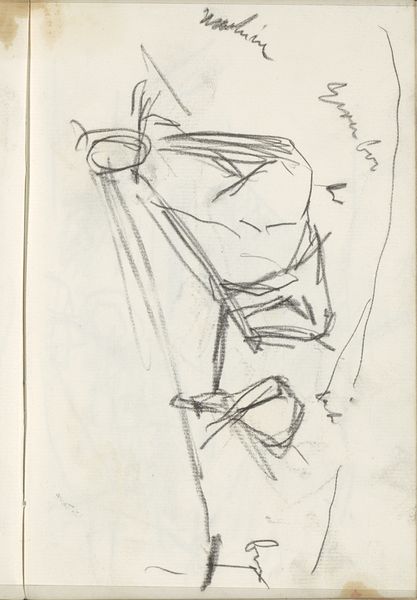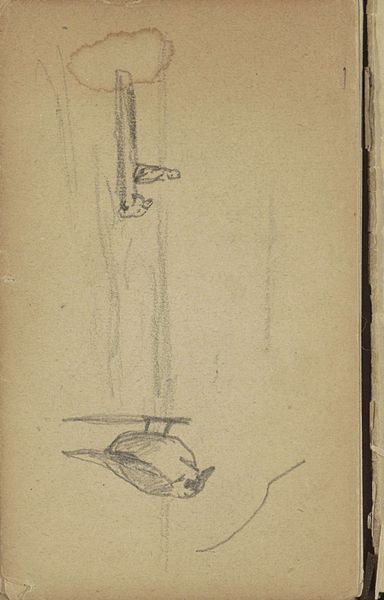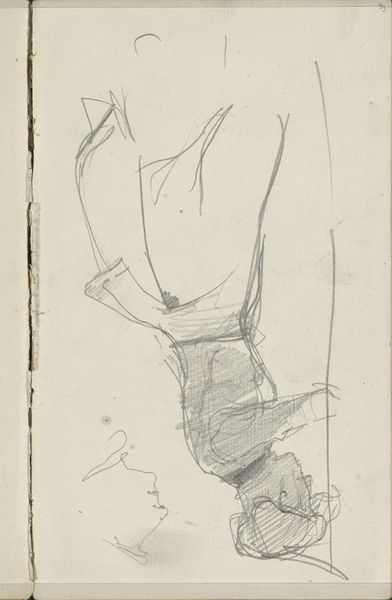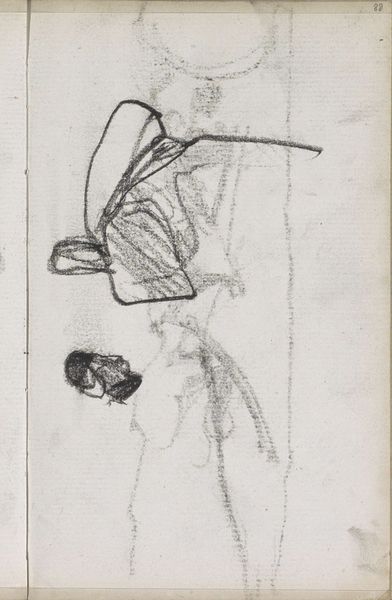
Copyright: Rijks Museum: Open Domain
Curator: Here we have George Hendrik Breitner's "Study, Possibly of a Man on a Quay," likely sketched between 1895 and 1898. It's a graphite and pencil drawing, currently residing at the Rijksmuseum. Editor: My first impression is a sketch of quiet desperation. The spareness of the lines amplifies the feeling of isolation. Curator: I think that speaks to the transient nature of labor and the realities for port workers at the time. Breitner often depicted the working class of Amsterdam; this sketch offers a glimpse into their lives, representing the intersection of class and urban experience. Editor: Absolutely. Look at the material economy of it. Just pencil and paper, a quick record of someone likely engaged in manual labor near the water, rendered with stark economy. I'm interested in how Breitner transforms something ephemeral like a street scene into something seemingly permanent on paper. It's about process and transforming observation into artifact. Curator: It makes me think about whose stories are valued and how art can function as a tool for social commentary, especially during a time of rapid industrialization. Does the anonymity of the figure heighten our awareness of systemic precarity? Editor: I agree completely, it makes me question, as he rapidly captures this moment with these humble tools: What was discarded and left unseen. Curator: His impressionistic style, characterized by loose strokes and capturing fleeting moments, doesn't just record, it implicitly asks us to consider those broader questions of value. Editor: These raw marks tell so much about both subject and production, its about transforming base materials into images, into something greater than the sum of it’s part. Curator: In essence, this small sketch, imbued with the spirit of Impressionism, presents us not just with a figure but also with an invitation to reflect upon the human condition, the intersection of identity, and the dynamics of labor at the close of the 19th century. Editor: The humble act of its making underscores the social realities. Thank you for sharing your insights.
Comments
No comments
Be the first to comment and join the conversation on the ultimate creative platform.
